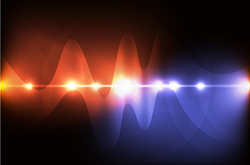Trending Science: Scientists win the 2018 Nobel Prize in Physics for revolutionising laser physics
Physicists Mourou and Strickland of École Polytechnique, France, and the University of Waterloo, Canada, respectively, developed a technique that generates high-intensity, ultrashort optical pulses. According to a press release(opens in new window) posted on the official Nobel Prize website, the researchers “paved the way towards the shortest and most intense laser pulses ever created by mankind. Their revolutionary article was published in 1985 and was the foundation of Strickland’s doctoral thesis.” They used an innovative approach to create ultrashort high-intensity laser pulses. This was accomplished without needing to destroy the amplifying material. “First they stretched the laser pulses in time to reduce their peak power, then amplified them, and finally compressed them. If a pulse is compressed in time and becomes shorter, then more light is packed together in the same tiny space – the intensity of the pulse increases dramatically.” The newly invented method, called chirped pulse amplification (CPA), quickly became the norm for ensuing high-intensity lasers. Thanks to CPA, millions of corrective eye surgeries are performed yearly that employ the sharpest laser beams available. The developed technique has opened up new research avenues and led to wide-ranging industrial and medical applications. Many more uses still remain unexplored. “I warmly congratulate … Gérard Mourou and Donna Strickland on their achievement,” said Carlos Moedas, European Commissioner for Research, Science and Innovation in a news item(opens in new window) posted on the European Commission’s official web portal. “I am proud to say that EU funding has supported one of this year’s Nobel Prize laureates to help perfect laser physics. Their discoveries will help us all to stay at the cutting edge of scientific frontiers.” With EUR 500 000 in EU funding for the 2012-2013 ICAN(opens in new window) project, Dr Mourou led a team of physicists in the hopes of developing a revolutionary laser system. To do so, they explored the use of fibre lasers in pioneering particle accelerator technologies. For the first time, a radical laser architecture could accelerate particles to very high energy over very short distances, at high repetition rate and with good wall-plug efficiency. The European Commission’s news item notes that he also initiated and coordinated the Extreme Light Infrastructure (ELI), a new research infrastructure of pan-European interest and part of the European ESFRI Roadmap. ELI began as a bottom-up initiative of the European scientific laser community. Dr Strickland, an associate professor of physics and astronomy, became the first woman Nobel Prize in Physics winner in 55 years. Dr Mourou is also affiliated with the University of Michigan in the United States.
Countries
Sweden



